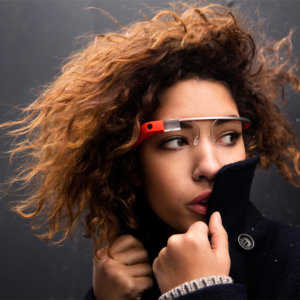Competing in the Age of Omnichannel Retailing
As technology blurs the distinctions between physical and online retailing, retailers and their supply-chain partners will need to rethink their competitive strategies.
Topics
Brandon McDonald, of Nashville, Tennessee, visited a local Best Buy to purchase a digital single-lens reflex camera. After browsing through the available products, he decided that he liked the Nikon D5100. To verify the price, he scanned the barcode with the RedLaser app on his smartphone. McDonald found that Amazon.com’s price was lower than Best Buy’s, so he purchased the camera from Amazon using his phone as he stood in the store. Although he and his wife had intended to return home with a camera that day, to save money they were willing to wait two days for the item to be sent.
Tasmia Kashem, a resident of Burbank, California, went to the Beverly Center mall in Los Angeles to shop for shoes. After browsing at Nine West, a fashion retail chain store, Kashem didn’t see anything she liked. As she was leaving the store, an associate offered to show her additional collections on an iPad. Upon scanning through the online offerings and reading reviews, Kashem decided to preorder a new style that was arriving at the store the following week.
Examples such as these illustrate how recent technology advances in mobile computing and augmented reality are blurring the boundaries between traditional and Internet retailing, enabling retailers to interact with consumers through multiple touch points and expose them to a rich blend of offline sensory information and online content. (See “About the Research.”) In the United States today, more than 50% of cell phone owners have smartphones, and more than 70% of these have used their devices for comparison shopping,1 a habit that is becoming increasingly common worldwide.
In the past, brick-and-mortar retail stores were unique in allowing consumers to touch and feel merchandise and provide instant gratification; Internet retailers, meanwhile, tried to woo shoppers with wide product selection, low prices and content such as product reviews and ratings. As the retailing industry evolves toward a seamless “omnichannel retailing” experience, the distinctions between physical and online will vanish, turning the world into a showroom without walls. The retail industry is shifting toward a concierge model geared toward helping consumers, rather than focusing only on transactions and deliveries. For example, physical retail spaces will be augmented by virtual content accessible from smartphones and other devices such as Google Glass, Google’s wearable computer.
References
1. comScore, “comScore Reports February 2013 U.S. Smartphone Subscriber Market Share,” April 4, 2013, and Nielsen, “For U.S. Consumers, Different Stores Mean Different Smartphone Shopping Behavior,” May 4, 2012.
2. K. Zickuhr, “Three-Quarters of Smartphone Owners Use Location-Based Services,” May 11, 2012.
3. A. Ignatius, “How eBay Developed a Culture of Experimentation,” Harvard Business Review 89, no. 3 (March 2011): 92-97.
4. E. Brynjolfsson, Y.J. Hu and M.S. Rahman, “Battle of the Retail Channels: How Product Selection and Geography Drive Cross-Channel Competition,” Management Science 55, no.11 (November 2009): 1755-1765.
5. M. Luca, “Reviews, Reputation, and Revenue: The Case of Yelp.com,” working paper 12-016, Harvard Business School, Cambridge, Massachusetts, September 2011, papers.ssrn.com.
6. J. Zinman and E. Zitzewitz, “Snowed: Deceptive Advertising by Ski Resorts,” working paper, Cambridge, Massachusetts, June 2009, papers.ssrn.com.
7. Brynjolfsson, Hu and Rahman, “Battle of the Retail Channels”; and B. Nault and M.S. Rahman, “Reach Versus Competition in Channels with Internet and Traditional Retailers,” working paper, University of Calgary, Calgary, Alberta, July 2012.
8. E. Brynjolfsson, Y.J. Hu and M.D. Smith, “From Niches to Riches: The Anatomy of the Long Tail,” MIT Sloan Management Review 47, no. 4 (summer 2006): 67-71.
9. D. Streitfeld, “Amazon Signs Up Authors, Writing Publishers Out of Deal,” New York Times, Oct. 17, 2011, p. A1.
i. More details are available in Brynjolfsson, Hu and Rahman, “Battle of the Retail Channels.”


Comments (4)
nitesh Bansal
JOSE LUIS CHARCA YANA
javier santiago gomez blanzaco
Scott Perry